Exhibition and Empire: Decolonizing Museums Requires a New “Metabolic” Architecture, Says Curator CLÉMENTINE DELISS
|Victoria Camblin
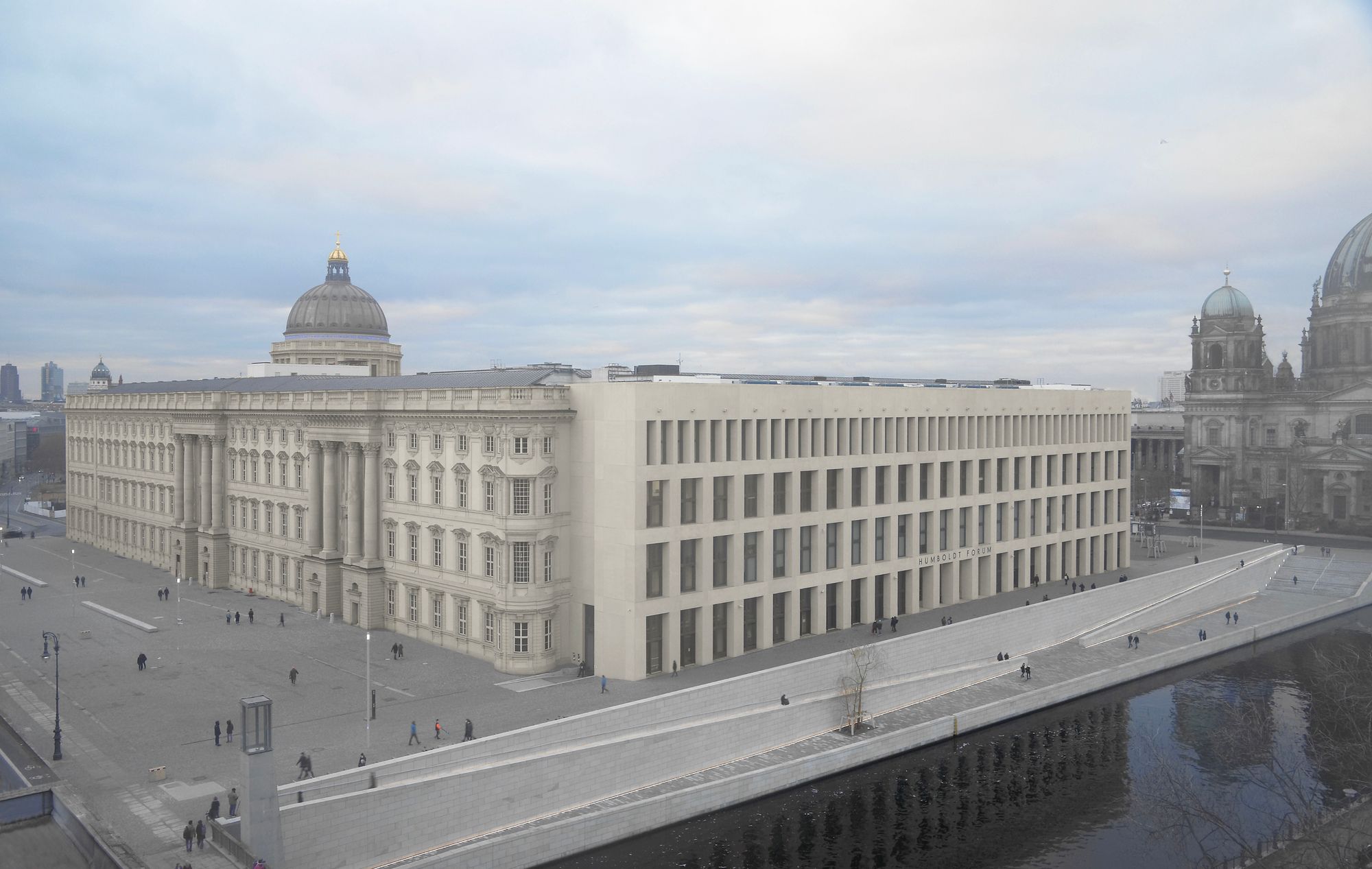
A museum, wrote Georges Bataille in 1930, is “the lung of a great city,” through which visitors flow as blood and emerge re-oxygenated. The collecting institution, with its “colossal accumulation of riches,” is a mirror through which we contemplate ourselves through a perceived “communion with objects.” In her latest book, The Metabolic Museum, CLÉMENTINE DELISS nods to Bataille’s visceral definition, which also connects the birth of the modern museum to the 18th century “development of the guillotine,” and enlightenment thought to bloodshed. If museums today fear losing their collections, perhaps it is a reflection of the European self’s entanglement with what Deliss calls a “cult of possession”: a compulsive need for ownership – not just of physical materials but of their images, of the right to reproduce them, of the knowledge they contain – masked by claims to scientific research. The violence and contradiction of this enlightenment legacy, of which many museum and academic leaders in the global north today are inheritors, is one of a number of tensions that have informed my conversations with Deliss, excerpted below, since the publication of The Metabolic Museum – released in summer 2020, but increasingly relevant with each cultural news item.
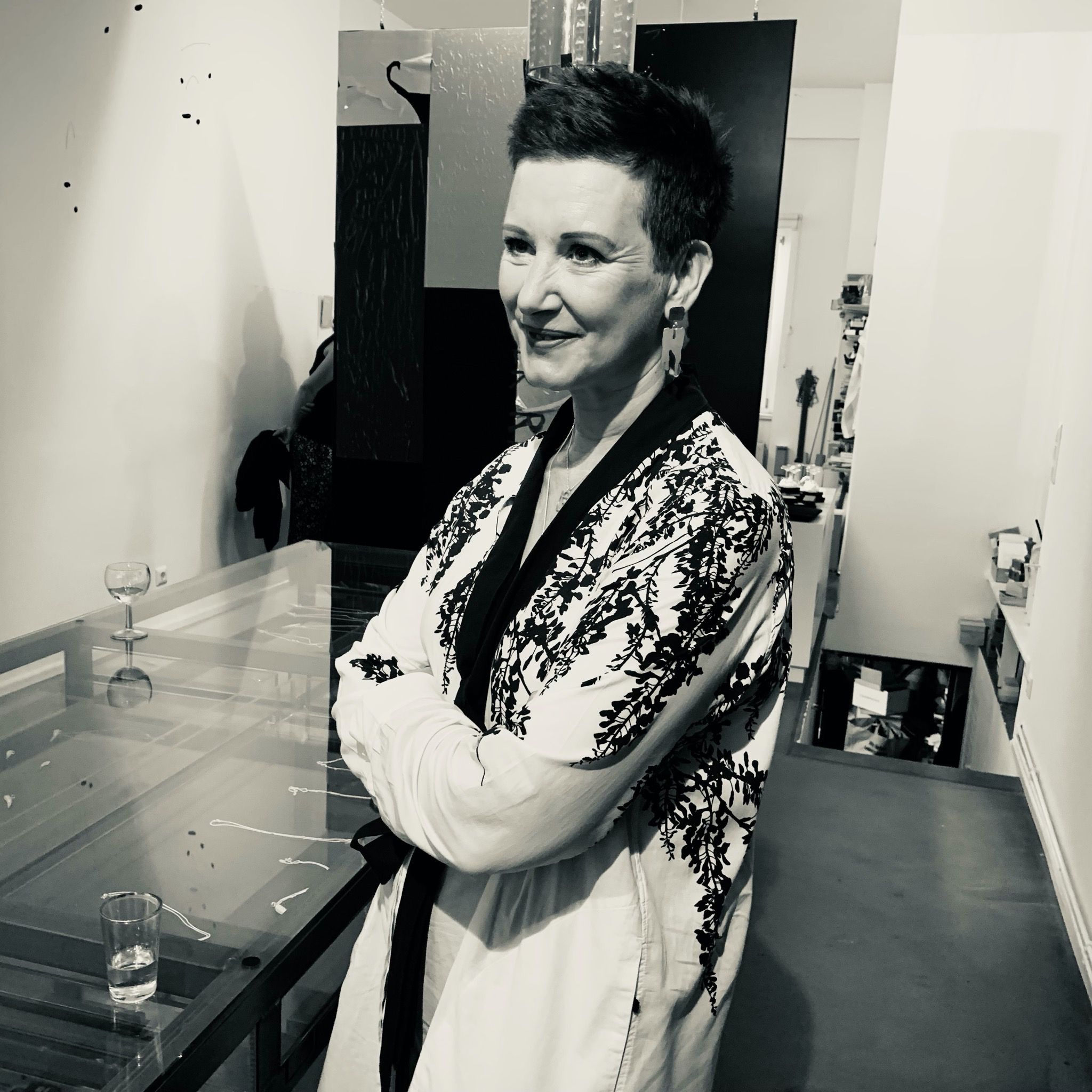
Berlin’s Humboldt Forum opened its doors to the public on July 20, 2021, following almost two years of construction and pandemic delays, and almost two decades of debate surrounding the institution’s legitimacy. Organizers hope that the 680 million euro “hub” – located at the former site of the headquarters of the German Democratic Republic, controversially torn down in 2006 to make way for a 18th century neoclassical reconstruction of the Berlin Palace – will become an international cultural destination on the scale of the British Museum. What the project already shares with its London counterpart is the dubious provenance of its holdings – which include sacred and mundane objects looted from the German colonial empire in Africa and the Pacific – and academic, political, and public scrutiny around its plans for their eventual restitution.
Inaugural shows address the intersection of nature and society, a motif dear to the institution’s namesake: Alexander von Humboldt, a German polymath with enlightenment values, aristocratic connections, and a penchant for large-scale collecting expeditions to colonial territories. “Terrible Beauty: Elephant. Human. Ivory,” an exhibition dedicated to the long and cruel history of a disturbing trade, is, according to artnet.com, less than forthcoming about the provenance of what’s on view: details are not included in the show’s wall texts, but “tucked into red drawers that one needs to pull out to read” instead. This design decision might raise an equally red flag to those critical of the Humboldt Forum’s plans to exhibit Berlin’s vast collection of Benin bronzes – objects that have become synonymous with debates surrounding restitution – in early 2022. Their exhibition will be temporary, but if calls for massive institutional change remain unheard, pressing issues of access and ownership posed by such institutions as the Humboldt Forum and its colonial past will persist.
Clémentine Deliss is familiar with having to pry open drawers to get to the bottom of ethnographic holdings. When the Berlin-based curator and scholar began writing The Metabolic Museum in 2015, it was soon after her abrupt dismissal from her directorship of the Weltkulturen Museum in Frankfurt, which is home to a collection of more than 65,000 objects from around the globe. The “about” section on the Frankfurt museum’s website mentions the collection’s growth and maintenance over the course of the 20th century, but says nothing about how its contents from Oceania, Asia, the Americas, and Africa came to Germany in the first place. Deliss used her tenure in Frankfurt to address precisely that omission, through an experimental process of “remediation.” Her program tapped contemporary artists, lawyers, fashion designers, writers, and other cultural producers for site-specific commissions and interventions in an ongoing effort to daylight the artifacts kept out of sight in the drawers and basements of so many European institutions: banks of “stored code” and cultural memory, “reservoirs” of energy to be unlocked and redistributed. Making visible such objects of art and life invariably reveals the violent course by which they arrived in the obstinate possession of museums such as Frankfurt’s or the Humboldt Forum – an essential endeavor, writes Deliss, if we are to chart a just and transparent path toward a decolonial museum, and a decolonized academy. What is needed, she argues, is a new architecture that creates space for objects to be reassessed by the descendents of their makers, and reinterpreted by a trans-disciplinary student body – from a 21st century, polycultural lens. Now an Associate Curator of KW Institute for Contemporary Art, Deliss is currently working on a new iteration of what she terms a “Metabolic Museum-University,” based on the crypts of Berlin.
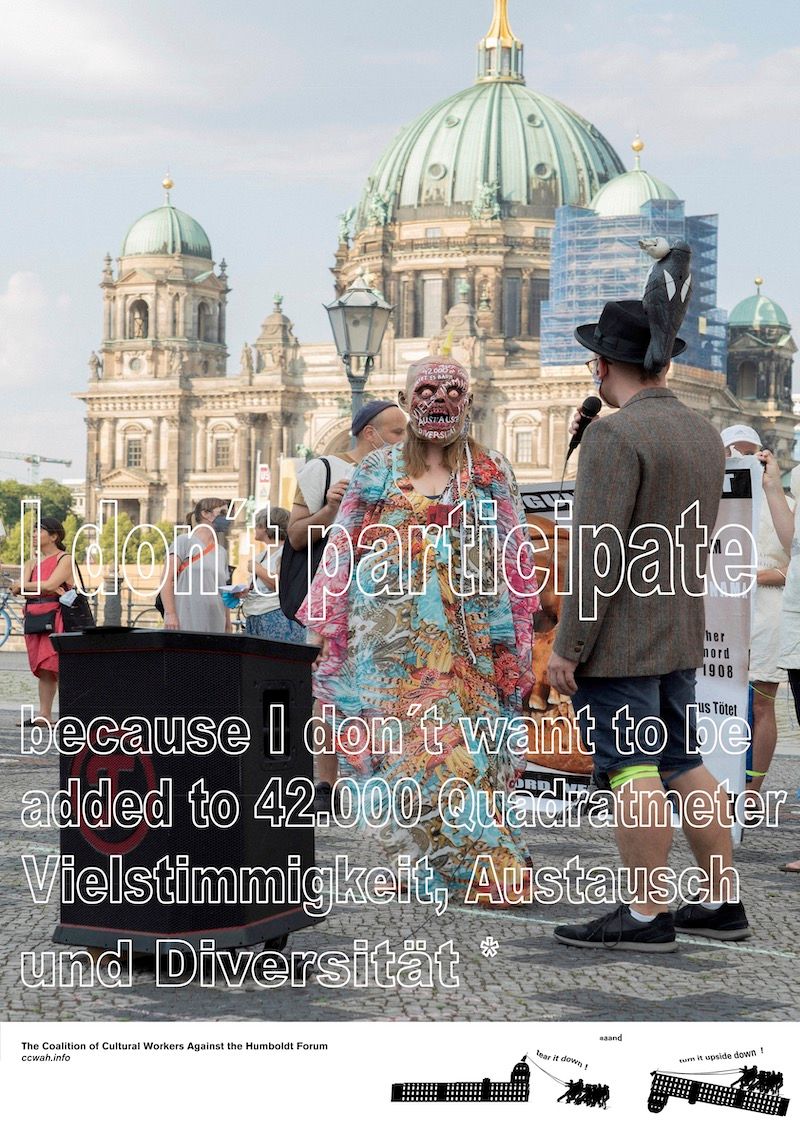
Victoria Camblin: When did you get to Germany, within the arc of your career?
Clémentine Deliss: I had been a guest professor at the Städelschule in Franfurt in 1999, but I didn’t move to Germany until 2010, when I became director of the Weltkulturen Museum in the same city. I lived there for five years and then moved to Berlin, initially to the Institute of Advanced Study (Wissenschaftskolleg). That’s where I began writing the book. It’s an incredible residency. They have about 40 Fellows a year who are invited, in all disciplines. For example, in my year we had a lawyer from Haifa who works on behalf of Palestinian citizens of Israel, and Tim Caro, the son of the sculptor Anthony Caro, who was researching why zebras have stripes. And there was a cognitive psychologist working on whether or not fish feel pain.
Do they?
I believe so! At the time, every Fellow had to give a seminar. I was excited to address this multi-disciplinary group of people, and I wanted to borrow an object from the Ethnological Museum in Dahlem, which is two miles away from the Institute. In Frankfurt we had a highly ambiguous, very beautiful ovoid object made of fine, woven rattan. The inventory card states that it is a mask, which is hard to believe because you can’t fit it onto your head. I asked the Dahlem museum if they happened to have an object like that, and I sent a photograph. The director passed me on to the Africa department. It took several weeks to get a reply, and the answer was negative. They used the argument of toxicity, claiming that if we were near it, we would be poisoned after a couple of hours.
That you would be poisoned, not that you would poison the object?
We would be poisoned, because of the arsenic and other toxic chemicals that had been used to decimate any living being attached to this object. The word in German is entwesen, which is a term with a particularly ominous semantic – like getting rid of all existence. It was frustrating, but it was also significant that such a small artifact, in the scheme of things, could be prevented from being brought into a high-level interdisciplinary seminar at the Institute of Advanced Research. This is the kind of problem you might get when you want to work with these collections.
Why is it so hard? Clearly, this is not one administrator or one institution – it’s in the methodology, in the museum culture.
It’s what I call a cult of possession. In anthropology one speaks about “possession cults,” in other societies. But this is the reverse: a cult of obsessive ownership on the part of the global north. I am a curator, and I studied contemporary art practice and semantic anthropology, which was about working on ethnological narratives through literary criticism. When I was director of the museum in Frankfurt I didn’t claim to be a regional expert. I would walk through the collections and constantly open drawers. Most were locked and their contents barely labelled. Only the keeper knew what was in the steel cabinets. I realized that there was a route that the custodians would take to intersect with the objects that they knew about. And each time I brought artists, fashion designers, or cultural workers into the depot they were guaranteed to pinpoint something the museum experts couldn’t identify so easily. There is a kind of custodial chaos that is held at bay by the keepers of these collections. In addition, there is no space where you can bring artifacts from different regions and look at these items together. That would be too chaotic. If you did this regularly, then the custodians would have a lot of work to do bringing things back and forth!
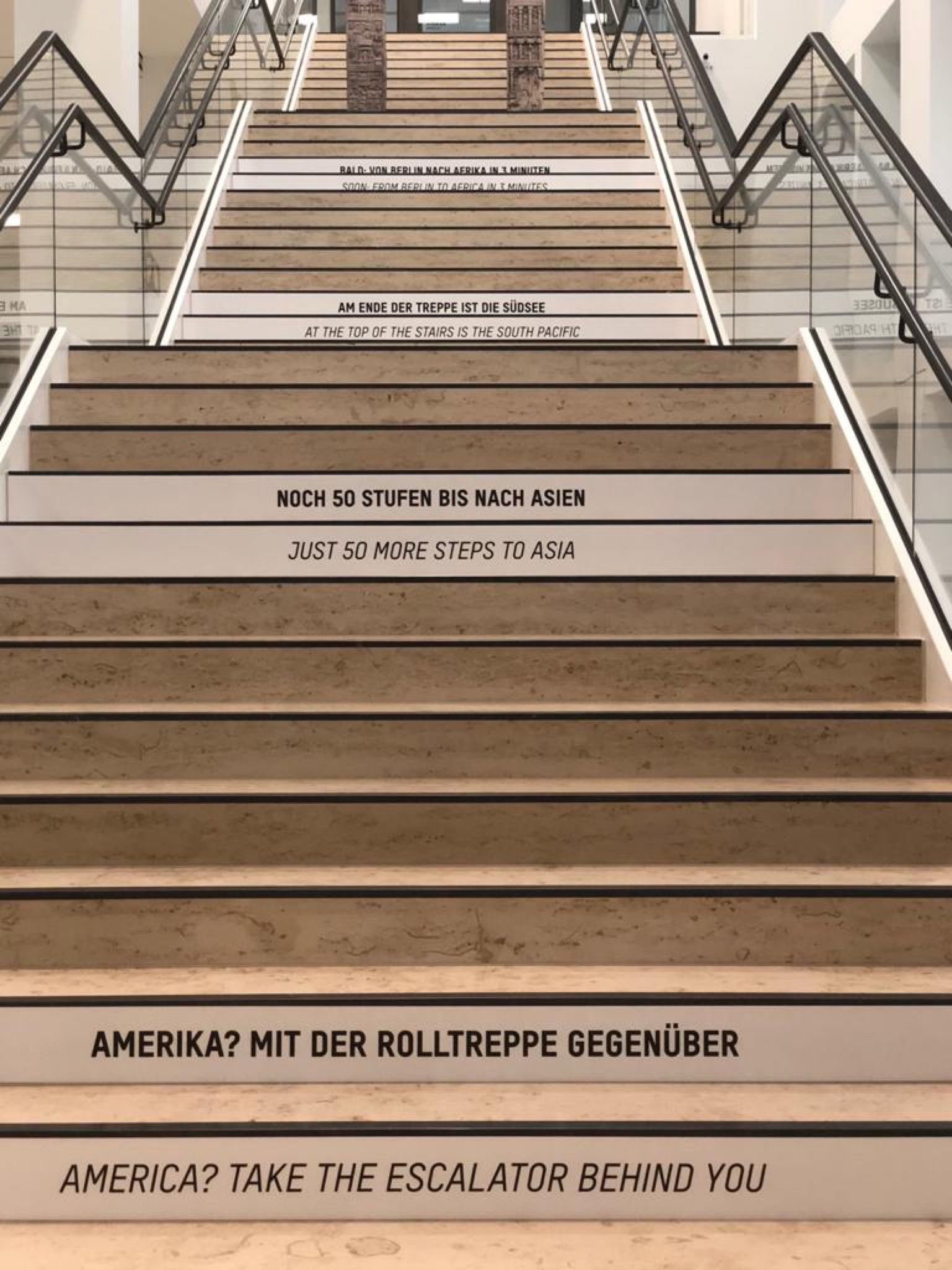
So in addition to restriction of access, you have silos that prevent comparative analysis that might inform, or help to interpret the different artifacts in these collections?
Historically, audiences – the public, researchers, students, source communities – have only been allowed into collections when they have a specific reason or object of research. But today, in this decolonial moment, we must really question whether preventing access to them is legitimate. No architect has created an intelligent storage space for regular multi-disciplinary research. You can’t work with closed, sealed off cupboards and filing systems, and without space where you can bring assemblages together. There has never been an emphatic requirement to deploy storage spaces as conducive object libraries. The storage buries its contents, which are only removed via data banks and for very specific purposes such as an exhibition.
So you need the equivalent of “open stacks”?
Open storage in exhibitions can quickly lead to gloating, a type of “look how many things we own.” In museums where that exists, generally speaking, there are no tables and chairs, no trolleys, no way to bring things out and look at them in various constellations. It’s spatially restrictive. I believe we can’t do decolonial art history without access to these plundered and now sequestered artifacts. That’s why I think we need “Museum-Universities” with a new type of architecture that takes multi-disciplinary student research into account.
What would that look like, spatially and organizationally?
I see it looking something like a flat, horizontal greenhouse architecture, where you can produce polycultural knowledge.
A bio dome.
I don’t think there’s a museum with that spatial matrix that we know today.
It’s all neo-classical, historicist architecture – throwbacks to Bismarck, and thus to the colonial campaigns that Germany has managed to somehow keep their hands clean of, which is absurd given the events of the 20th century. I’m obviously thinking of the Humboldt Forum, newly unveiled in the middle of Berlin.
The thing about Germany is that it has significantly more ethnographic collections than other European countries. The four large ethnographic museums are in Hamburg, Dresden-Leipzig, Munich, and Berlin; each has approximately half a million objects, so that is already two million. Then you have approximately 15 smaller provincial ethnographic museums. If each one has about 70,000 artifacts, you can add it up and without much difficulty you can reach several million.
“The museums wanted to create their own phantasmagoria around the ethnicities, cultures, religions, rituals, life, and death of the people from whom these artifacts were removed. What would the museum anthropologists do otherwise? If they had too much knowledge to begin with, then they wouldn’t have anything to write about at home.”
This is fascinating, this idea of how much wealth there is in terms of artifacts in Germany, and how thoroughly the collections are seemingly quantified.
No, not thoroughly at all. The fact is that most of these artifacts were brought back in large-scale collecting expeditions. There was no time or desire to create a thorough inventory with object biographies. Whether the objects were plundered, stolen, given as presents, or swapped, there was little recording made of their authorship, ownership, and other details of provenance.
You don’t show up after an expedition with a certificate of purchase.
No. The museums wanted to create their own phantasmagoria around the ethnicities, cultures, religions, rituals, life, and death of the people from whom these artifacts were removed. What would the museum anthropologists do otherwise? If they had too much knowledge to begin with, then they wouldn’t have anything to write about at home. People are still collecting today, still trying to find as much material as possible – in particular, they’re looking for photographic archives to bring them back for posterity in the global north. All within this extremely ideological understanding of “conservation.”
There is a line in your book, which Coco Fusco quotes in her review for the New York Review of Books, about conservation’s relationship to conservative frameworks.
Nobody is interested in destroying anything, but there is a rule that all human organic emissions –spit, breath, oil, anything that could be transferred from your body onto the object – is an absolute no-go area, something to be avoided at all costs. When designers Perks and Mini worked with the collection, they were forbidden to try any clothes on! You have to wonder what this is actually about. The first thing the conservator in Frankfurt said to me was, “No. You can’t touch this. It is not permitted.” When I asked why, he said the rules are that each object should be conserved for a minimum of 1,000 years.
That seems a bit arbitrary.
Well, it’s an ideological model. It’s not truth. It’s just a model that is connected to the development of colonial museums in the global north. In Southeast Asia temples are painted over every 70 years. No one questions that. It’s much easier to say, “We are going to conserve these artifacts for posterity, for future generations, so best if you don’t handle them.” They even say, “We know how to do it better than the countries of origin; they don’t have the right buildings, they don’t have the right professional competence, so let’s keep the artifacts here.” But what is meant by looking after it “better”?Effectively sequestering other peoples’ cultural heritage, locking it up.
So conservation is ultimately about not having to send things back.
Museums don’t even know what they have. But they do know that it is legally complex to send everything back in one go. Behind the municipal or state holdings is a massive, slow body of administrative and juridical paperwork that makes it impossible to do large scale restitution. Further, because none of the artifacts circulate, the question of their value is conjectural, unresolved. It is like you have a reservoir of an energy that you are not quite sure how to quantify. But you won’t let go of it, even if it is contentious.
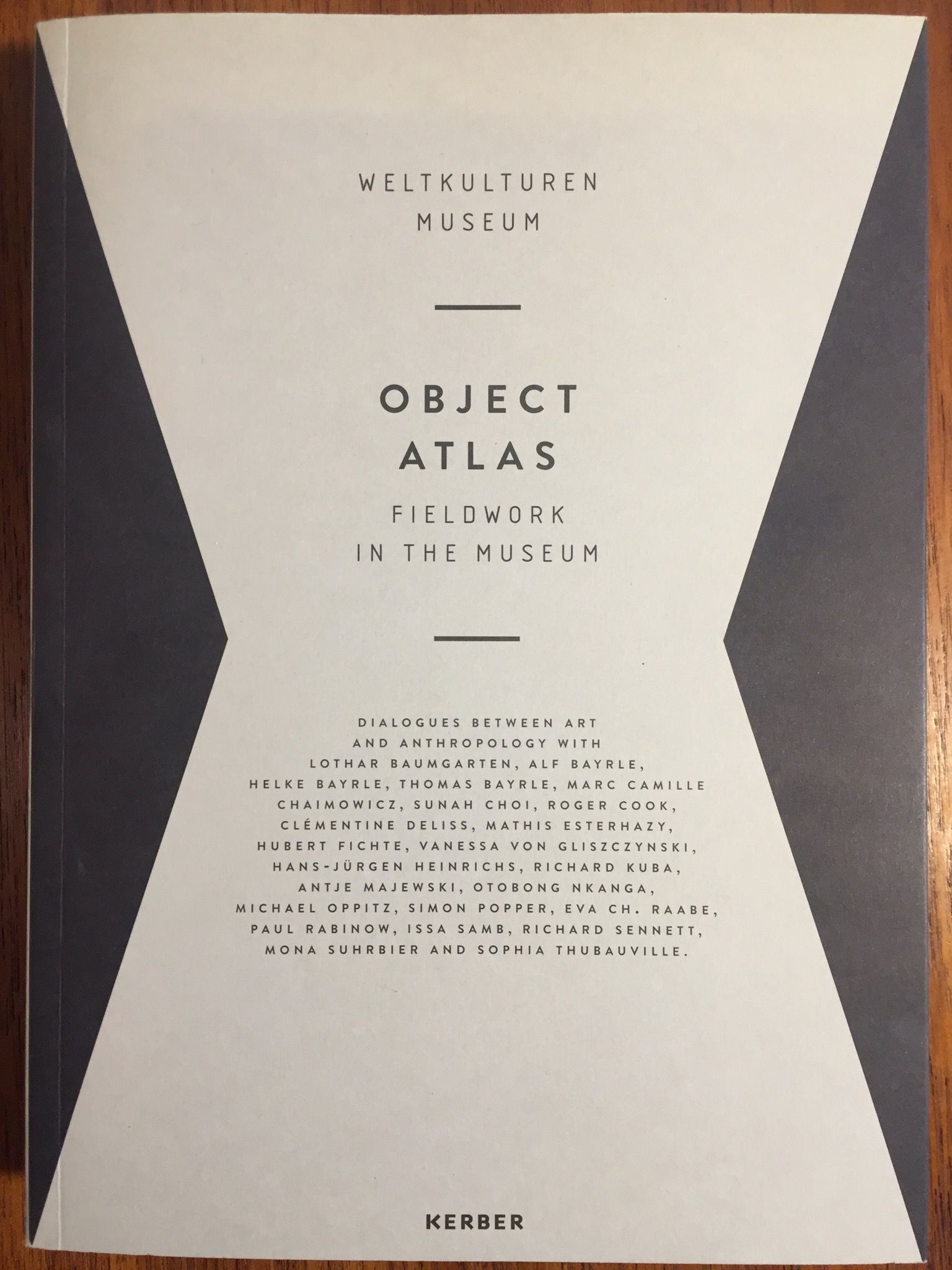
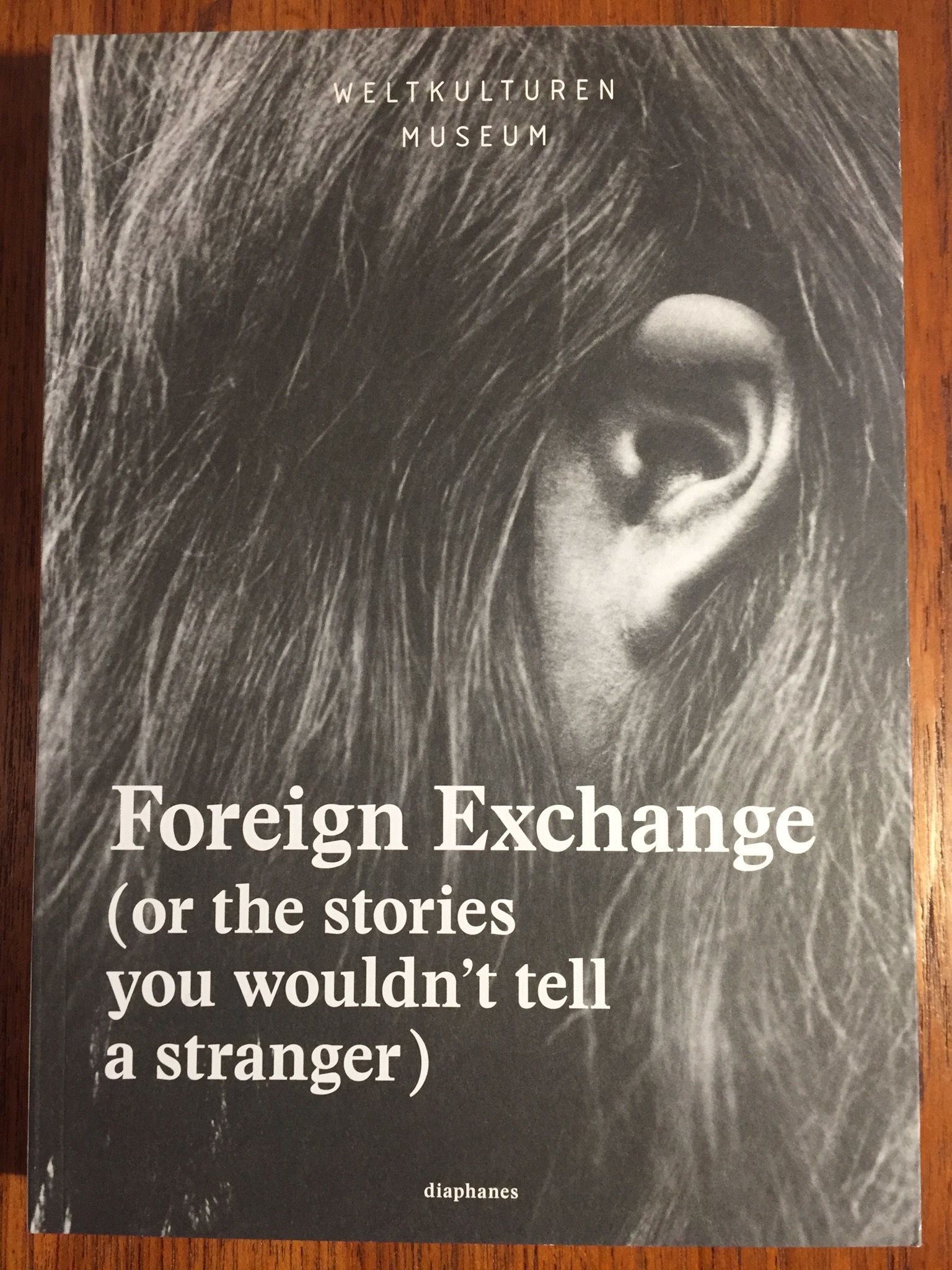
Doesn’t exhibition history add to an object’s market value, because it increases its notoriety and authenticates it?
Remember that an object from an ethnographic collection that gets out onto the market today is bought within seconds. So the idea of hoarding these objects, under rules of conservation, is a means of insuring they increase in value.
They go that fast?
Nanoseconds. Nothing circulates beyond these museums. What is the psychology, the reasoning behind this resistance to let these artifacts go back, say, to the African continent? If they were collected in a serial manner in the past, then why can’t the duplicates be sent back? The majority of these ethnographic collections have to do with everyday life – they’re not ritual artifacts, but items that were brought over to educate the European public on how the “other” lives. But today, with technical equipment, CAD, digital processing, designers in these countries of origin could use the ingenuity of their past and work on new designs, new systems of engineering based on the brilliance of their ancestors. It’s not about “craft.” It’s not like you want to send a fish trap back so that the fish trap gets made again in a neo-traditionalist way. It’s about the stored code, the live wire that exists in these design models that might be of serious value to an environmentally conscious 21st century world. Take a ceramic pot that provides a cooling system by being placed in the earth. It’s like a fridge, but it needs no electricity. You know that you had this cooling system in your town, and maybe you remember that your father or your grandfather devised one, but you can’t really do much with these rights today because the provenance wasn’t recorded when it was taken. If designers from the countries of origin could access these artifacts, here in Europe, while restitution is taking its slow course forward, they would be able to rethink their functions for today’s world. To develop a new artifact with proof of technicity means you can patent it. The intellectual copyright of new design prototypes that develop out of an analysis of ethnographic collections are no longer in the hands of the European museum. This is what interests me: being able to look back at artifacts that have the potential to throw up questions of ecology and design that are relevant today. This is not the Benin bronze debate, but something quite different.
One of the latest and most disturbing developments, which connects to the question of copyright, is forensic imaging. At the Musée du quai Branly in Paris – and I am sure this is being done in other museums, too – they have really got stuck into it. They purchased a hospital level CT scanner. Within one week they had placed 150 major ritual artifacts through thescanner.
What happens, exactly, when you scan a ritual object?
Two things. Number one: they create new photographic imaging, which the museum then owns. Number two: they find something out, which can be described as “initiate knowledge” – something that may have been placed inside the sculpture and that only the sculptor and the priest will know about. In one case of a 17th century Songye figure – about 1.5 meters in height, sculpted from one block of wood –– there were ducts inside that had been delved out internally, between the figure’s mouth, anus, and navel. The priest would feed it symbolically and the contents would pass through, or they drop oil into it then put it in the sun and the artifact would sweat like a human. These ducts also contained mystical ingredients.
Nobody knew how this internal circulation was produced; it is complex engineering. In Paris, they claimed this procedure was “noninvasive.” I believe that forensic imaging is problematic: it is a desecration, and it is done under the pretext that such analyses can support the conservation of these rare artworks.
There is something about that terminology of “non-invasiveness” that always suggests its opposite somehow. It’s defensive, even violent.
People are performing quite brutal, ultimately illegal investigations on artifacts in these museums, without consulting the original cultures. Moreover, on the basis of these scans, they can entirely recreate the object from the inside out. They have the image rights, because they’re the ones who put the objects in the CT scanner in the first place. That means they have the rights to the three-dimensional reproduction of the object. They’re finding things out that haven’t been handed down to them through the channels of decency. The idea that anybody can do anything as long as they own it is what I mean by the “cult of possession.”
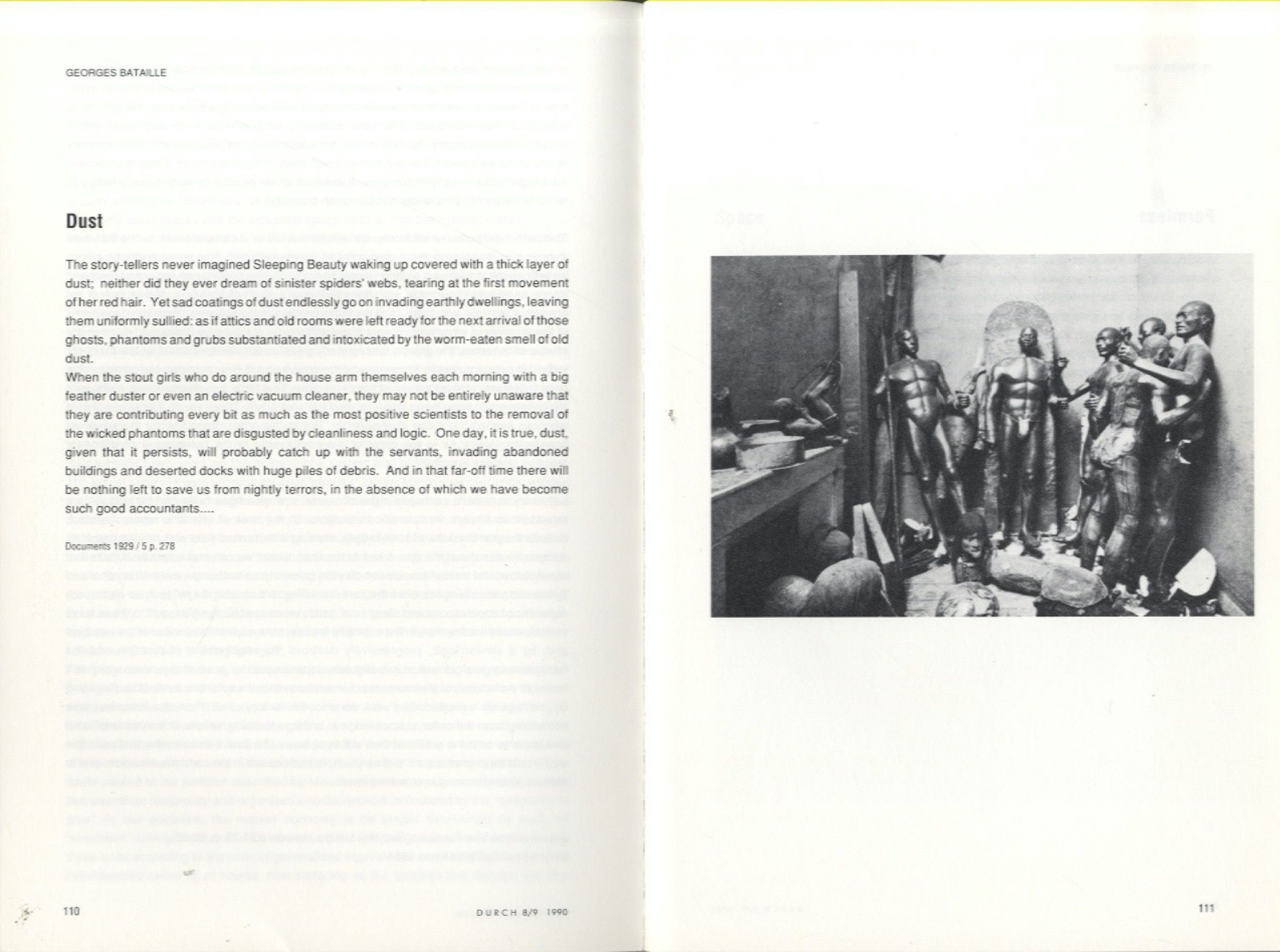
This is the inherent violence of the Enlightenment mythology that persists today: scientific thinking that purports to get us out of the cruelty of the premodern ages once and for all but that in fact masks, mechanizes, and perpetuates it.
This is what I mean by the ideology of conservation. It allows the museum to deviate utterly from any decolonial debate. It goes back to positivism, back to archeology, back to forensic science. This is all going on while they are talking about restitution… In 2010, when I arrived at the Weltkulturen Museum, there was barely talk about restitution at all. Today, most ethnographic museums are claiming brownie points in debates on restitution byencouraging new provenance studies on the basis of what they didn’t record in the first place. I believe we face a decolonial imperative to provide access to these collections for people who are not anthropologists – to students, writers, literary critics, young people who are searching for their identities – so that they can produce what Saidiya Hartman has called “critical fabulation”: other narratives, meta-fictions that may say more about the present in the past than ethnology, the handmaiden of colonialism, ever can.
Could the ability to reproduce artifacts be reclaimed by these voices outside the institutions to provide a platform for the remediation you are describing?
Remediation is a healing procedure that operates through a transitional shift onto another medium, onto other systems of thought, onto other vehicles, artifacts, models. It is not about a neo-traditional reproduction. So yes, absolutely.
Do the CT scans get sent back, too?
Well, the Sarr Savoy report commissioned by President Macron recommended that every artifact returned be accompanied by the entire documentation around it. There is a gray zone, though, between documentation and photographic imagery. We found material in the Frankfurt museum that was quite horrific. One discovery was of a box of hundreds of photographs of penises, taken by the founding director in the 1890s. The negotiation of what to do with this material is very complex. That is why artists, writers, lawyers from the original communities are needed to find ways to remediate this contentious material. Restitution is reduced to relic diplomacy – a proxy cultural one-upmanship between former European colonizers. Be these museums in France, Britain, or Germany, access to the collections has to become part and parcel of restitution politics. We can’t forget the 99.99% that is not talked about!
In The Metabolic Museum, and in your practice at large, one of the vectors for remediation you engage alongside contemporary art and literary production is fashion design, which provides another means of seeing and working with ethnographic collections through new systems.
In 2012, with Trading Style, which I co-curated with stylist Teimaz Shaverdi of Azita, we invited four designers in residency to work and live in the museum for one month each. Cassette Playa, Perks and Mini (PAM), A Kind of Guise (AKOG), and Buki Akib all came over, one after the other. They each had an apartment in the museum, with a studio below, and they could select what they wanted to look at from the collections. These artifacts would be brought into the lab in the same villa. It was about production alongside research. AKOG brought a dog, three collaborators, sewing machines, ironing boards – everything – and basically started working on new designs. PAM went even further and made an entire collection based on the experience. Buki Akib was the only one who went off theme – she didn’t select clothing from the collection as source material, but musical instruments. Then she started designing a new series of textiles based on sound, which were subsequently woven in Nigeria.
“In anthropology one speaks about ‘possession cults,’ in other societies. But this is the reverse: a cult of obsessive ownership on the part of the global north.”
A number of fashion scandals – on the runway, in sports, and famously in festival wear – took place in the 2010s, when consumers appeared to question appropriative trends and logos with unprecedented verve. Did you or the designers have any outcry about cultural appropriation at the time?
Appropriation is part of fashion, isn’t it? In the case of the ethnographic museum, appropriation is endemic. With all those designers, the items that they were pulling out were not usually looked at – and this is exactly what we need.
Even in more recent fashion discourse the issue comes down to transparency – to explicit acknowledgement of influences by designers, responsible and informed collaborations, and, of course, proper compensation.
We need a new type of architecture where these collections are made available for research in order for decolonial design and decolonial art history to begin, for new types of legal copyrights and patents to be developed. Perhaps respect and rights can be channeled back to the original communities through a new juridical structure. How else can one do this?
There is of course a legacy to contemporary artists and writers engaging with such collections: the French surrealists were very active in colonial expeditions. The surrealist and ethnographer Michel Leiris struggles in his writings with the idea of not being able to access the objects and rituals on an authentic spiritual level. There’s a desire for immersion, but it is never achieved; he is blocked from total experience of the cultures he encounters. If we presume that this desire persists in research today, the resistance you encounter when you try to bring these devotional objects out of storage provides a hint of that frustration as well. Somebody has told Europeans that they can’t be a part of something, and so they have to own it, whether by stealing, hoarding, or invading it by scanning it.
You’re right. And if they’re told they can’t be a part of it, then they are going to make their own myth around it. Maybe I already told you that crazy anecdote about the church and Gondar? In 1933, when Marcel Griaule’s expedition team reached the town of Gondar in Ethiopia, there was a church, the Church of Santa Antonios, full of Coptic frescoes. The anthropologists were desperately trying to fill gaps in the Paris museum’s collection, and they didn’t have any frescoes. The church paintings were made in tempera, which means they could be removed from the wall. So they went to the local clergy and asked if they could do just that. Of course, the clergy said, “No. We don’t want you to make the walls of our church barren.” So Griaule threatened them. It’s not like he pulled out a gun, as he did elsewhere, but he used all sorts of subterfuge. They had brought a painter with them, Gaston-Louis Roux, and Griaule asked him to set up an easel and reproduce a section of the paintings in oils. Then he called the clergy around, and with great bombast, he took a bucket of water and threw it onto the reproduction. Because it was in oils, nothing happened – no smudge, just like water off a duck’s back. So the clergy said, ” Okay, if you repaint all the walls with new frescos, you can take the paintings down.” Somewhere in thearchive there are photographs of them up on ladders, repainting the originals – all these Parisian academics, society people, and surrealist ethnographers, with only one painter among them. They quickly removed the originals and took them back to Paris where they are partially exhibited in what was then the Musée d’Ethnographie du Trocadéro, today the Musée du quai Branly. The story doesn’t end there. In 1957, a German anthropologist goes to find the paintings in Gondar, but the walls are bare! Apparently, when Mussolini tried to colonize former Abyssinia, the Italians walked into the church, got excited by the paintings, removed them, and took them back to a museum in Rome. So now somewhere in a Roman museum, so the story goes, is the work of French anthropologists masquerading as original 17th century Coptic painting.
I’m not sure what this means for the question of reproduction and value, but that’s absurd. I’d like to ask more broadly about works moving around – not about their theft and restitution, but about de-accessioning. Maybe I’m missing something obvious, but why is it so taboo to de-accession? Why can’t a museum deaccession an artwork, say, to be able to pay its employees during a pandemic? I understand that museums have a mission to preserve things, but there seems to be more to this, something emotional or pathological.
Yes, deaccessioning remains a total taboo. I brought this up at a conference in New York and I was shouted at by another curator! But I was just trying to show the fetishization of value that no one can estimate in the context of ethnographic collections. Who is to say how much something’s worth? In the Global North, it is the market forces that decide. The insurance value, for example, is worked out by custodians on the basis of “tribal art” auction catalogues. Yet nothing circulates! It’s all speculative. There’s a section in my book where I talk about how the contemporary artists I brought into the museum – Luke Willis Thompson, Otobong Nkanga, Antje Majewski, Perks and Mini– gifted work they had made in the museum to create a new collection. The question I was asked by the city of Frankfurt was, “What’s their insurance value?” I got quite animated by the idea and I set up a seminar with the custodians to talk about the logic of the valuation. They said, “Well, why don’t you double the fee you gave to the artist?” That’s very arbitrary. These are works that are not on the market. It’s that kind of in-between liminal status that is so exciting about a research collection.
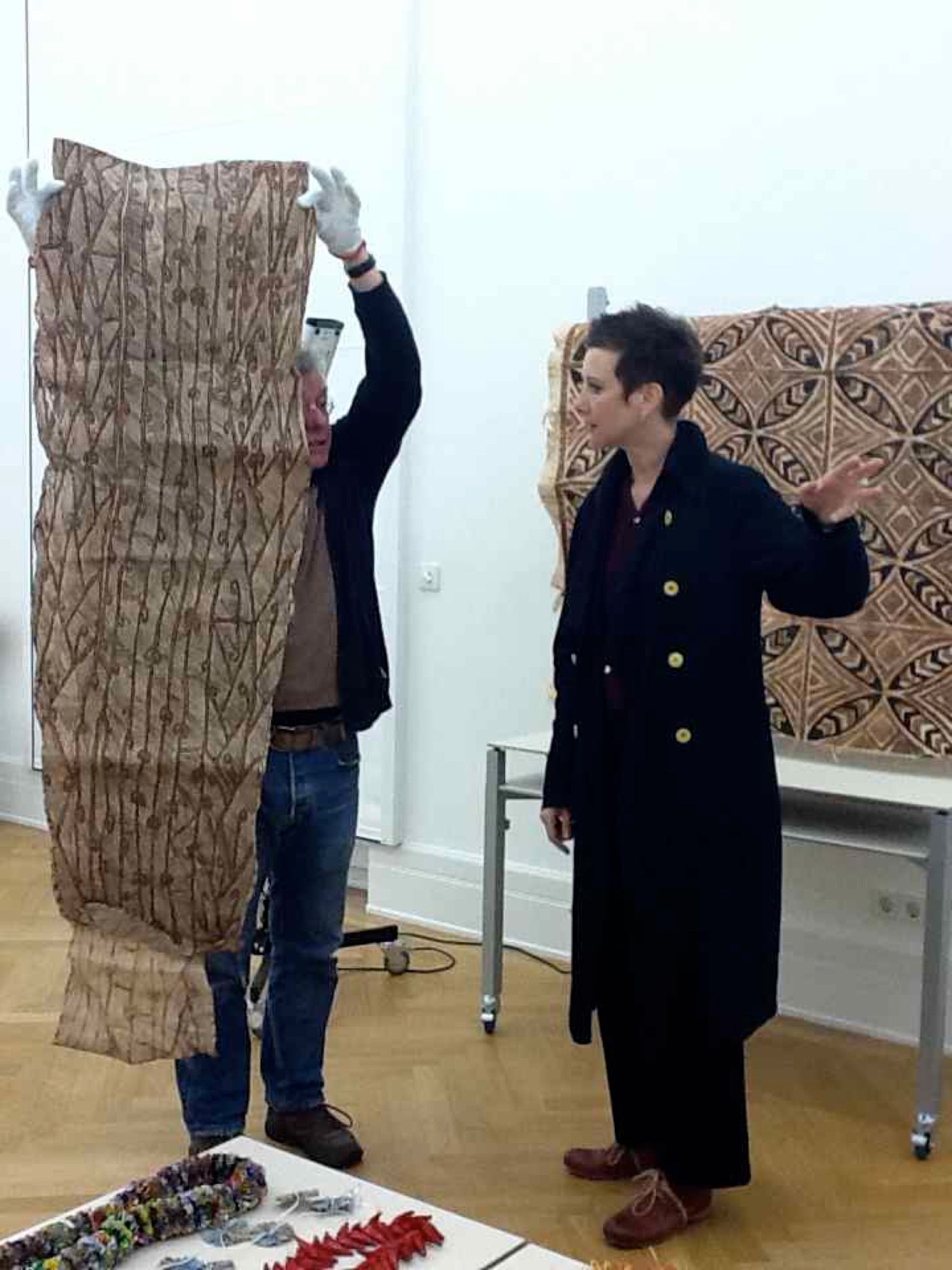
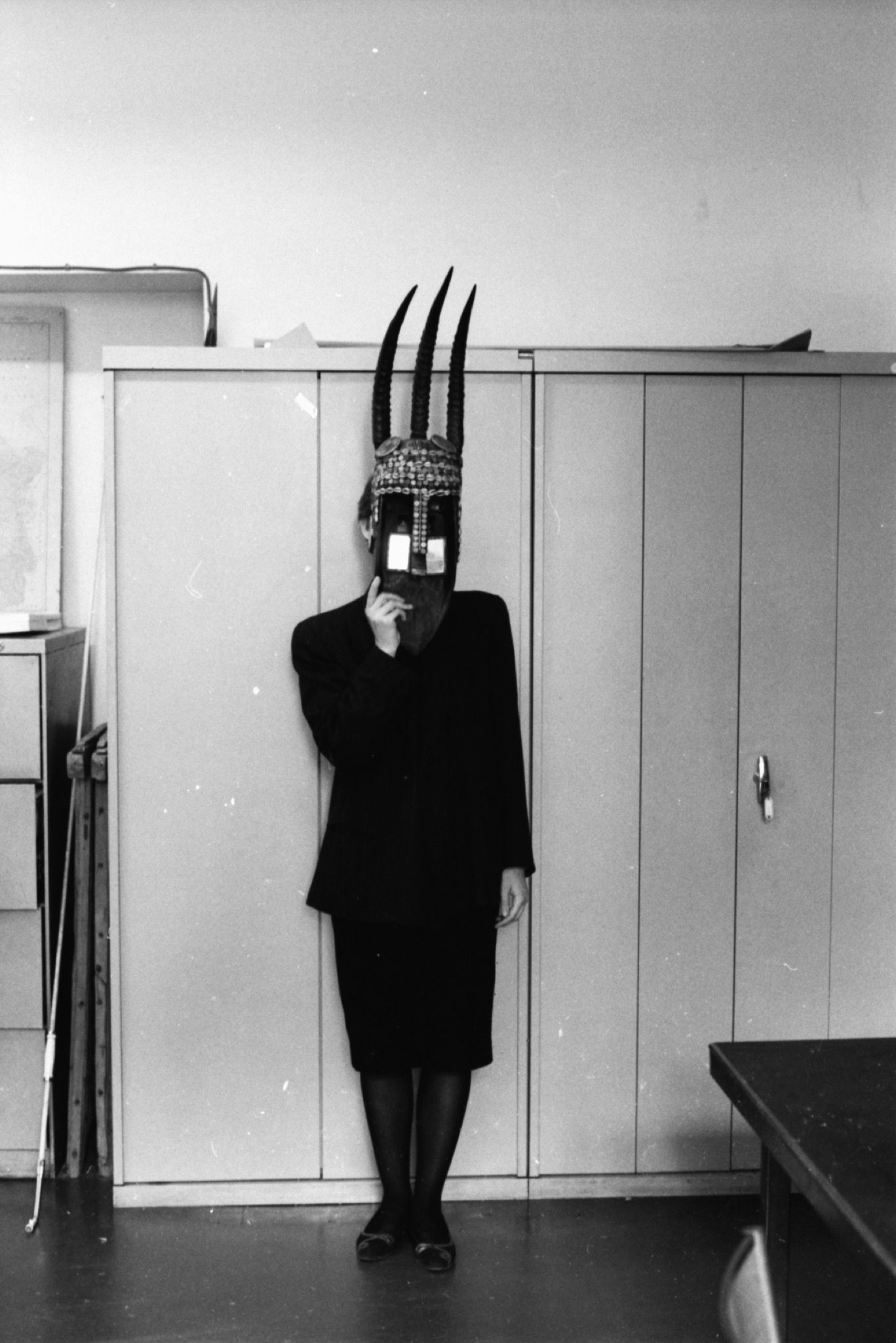
Luke Willis Thompson, who we invited to Frankfurt in 2013, recently suggested to me that museums looking to return objects back to the original communities were “dumping stock.” But I think the main issue is that deaccessioning throws into question the validity of the institution. If you look at university galleries in the States, they were often institutes of learning that were established on the basis of collections. Paradigms were developed around these objects, whether they were archeological or anthropological. The French in the 1930s claimed that the artifact was a condensation of culture, and that if you could decipher the object, you could understand “the indigenous mind.” Deaccessioning would start to gnaw away at the historical legitimacy of the institution and its paradigm of knowledge production. Today this would have its decolonial merits.
It’s like these materials are a power channel. Letting go of them would be like cutting off Samson’s hair.
It’s a Western mythology: the idea of holding onto stuff and not exchanging it or using it as a dialogical instrument. Reifying it as a marker of something in and of itself rather than as an object of contact. I personally think that museums must circulate their collections. I don’t see why the Historical Museum of Ukraine in Kiev shouldn’t send its collection to Lagos. Why does everything have to be so essentialist? The Met recently deaccessioned and got itself back into good standing by saying it was going to pay its workers that way, and there are other cases of deaccessioning that enable the purchase of works by artists of color, for example.
I’m sure this has been discussed at length, but what about a scenario in which objects are sent back but their reproductions are kept, with permission, on the premises in the Global North– serving not only anthropological, educational purposes, but as a record of the initial theft?
Jeff Koons shifted a small bunny into aluminum. He scaled up teddy bears into huge ceramics. You could argue that forensic imaging and the subsequent ability to reproduce the object, allows you to go one step further and say, “Okay, we have a Benin bronze – but let’s make it even larger. Let’s make a huge one and place it outside our museum.” Does that have more value than the original? What reproducibility doesn’t resolve is the resistance on the part of European museums to just let go. To let go of even being able to determine what gets done with these artifacts. If they want to send out curators to teach people in different countries how to conserve them, that’s fine, but it shouldn’t be a basis on which you do or do not send anything back. I don’t think we have anything to say in the argument.
In terms of not being able to let go, I’m grappling, again, with the audacity and violence of the Humboldt Forum in the German capital – the exaggerated neoclassicism of the building itself, the relocation of ethnographic collections from the suburbs into the middle of Berlin to exhibit them there.
For one, the Humboldt brothers were working in the service of German imperialism. It’s impossible to claim that they were anti-colonial. One of the problems is that the discussions around restitution are held within academic circles. So one has parapolitical academia on the one side and activists on the other, but they seem miles apart. I feel that not enough artists and students worldwide are fighting for rights of access to the collections in Europe or the US as a means of moving the needle while restitution inches its way forward.
I do get nervous about small victories – when something happens that might look good as an Instagram post, or when they say they’re returning five Benin bronzes but they don’t say how many bronzes they have in their possession. It’s rhetorical, at worst cosmetic. Every time we pat ourselves on the back it feeds a narrative of change that in turn allows the structures in place to remain as they are – or worse, to get bigger and more ostentatious.
And potentially more xenophobic. Either way it’s a closed shop, its own little commodified bubble, a dinner table conversation. There’s not enough pressure to access the collections there are in Europe. We just wait and believe in the armchair expertise of museum ethnologists. The battle continues.
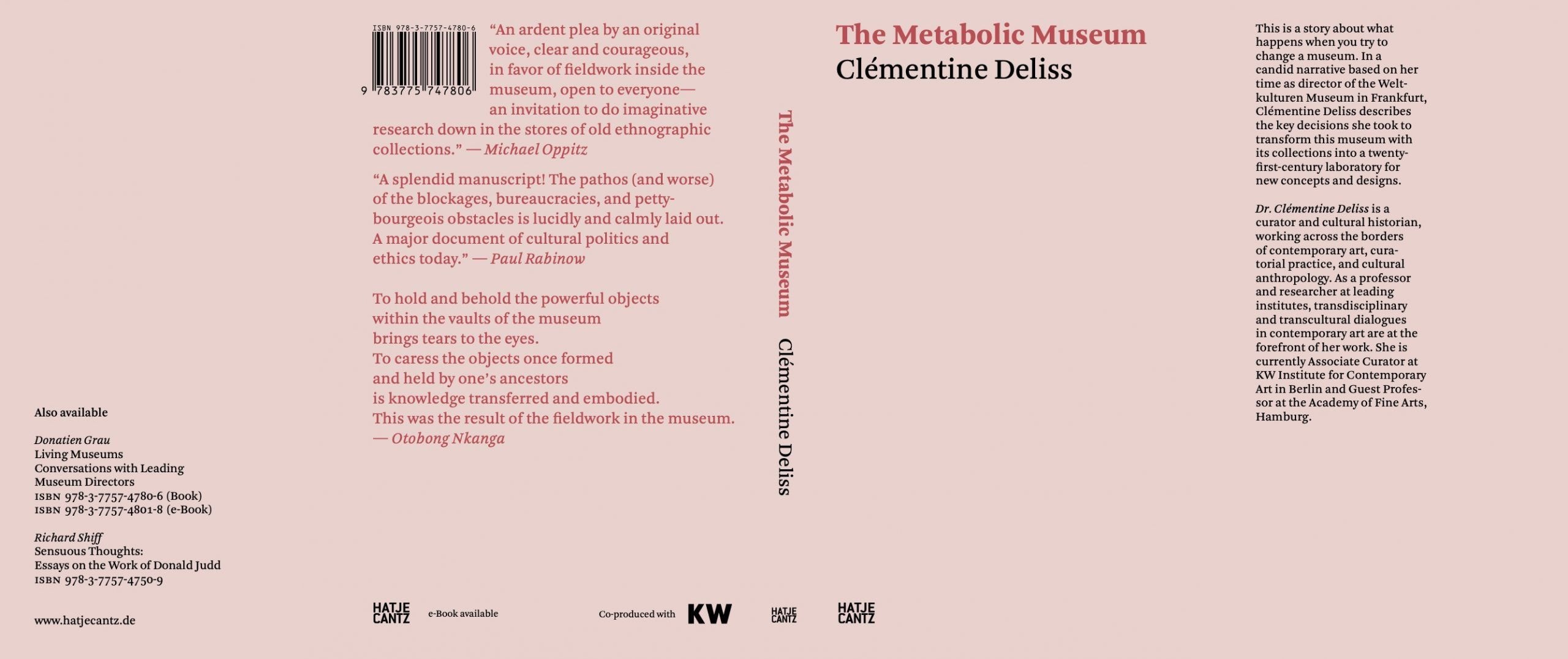
Dr. Clémentine Deliss is Global Humanities Visiting Professor in Art, University of Cambridge (2021-2022) and Associate Curator of KW Institute for Contemporary Art in Berlin, where she directs the Metabolic Museum-University. Her practice crosses the borders of contemporary art, curatorial experimentation, and critical anthropology. Between 2010–2015, she directed the Weltkulturen Museum in Frankfurt instituting a new lab for post-ethnographic research. She was a Fellow of the Institute of Advanced Study Berlin and has taught art theory and curatorial practice at the Ecole nationale supérieur Paris-Cergy, Karlsruhe University of Arts and Design, and the Hamburg University of the Arts. Her book The Metabolic Museum is published by Hatje Cantz in co-production with KW (2020) and in Russian translation with Garage Publishing (2021). She lives in Berlin.
Credits
- Text: Victoria Camblin
Related Content
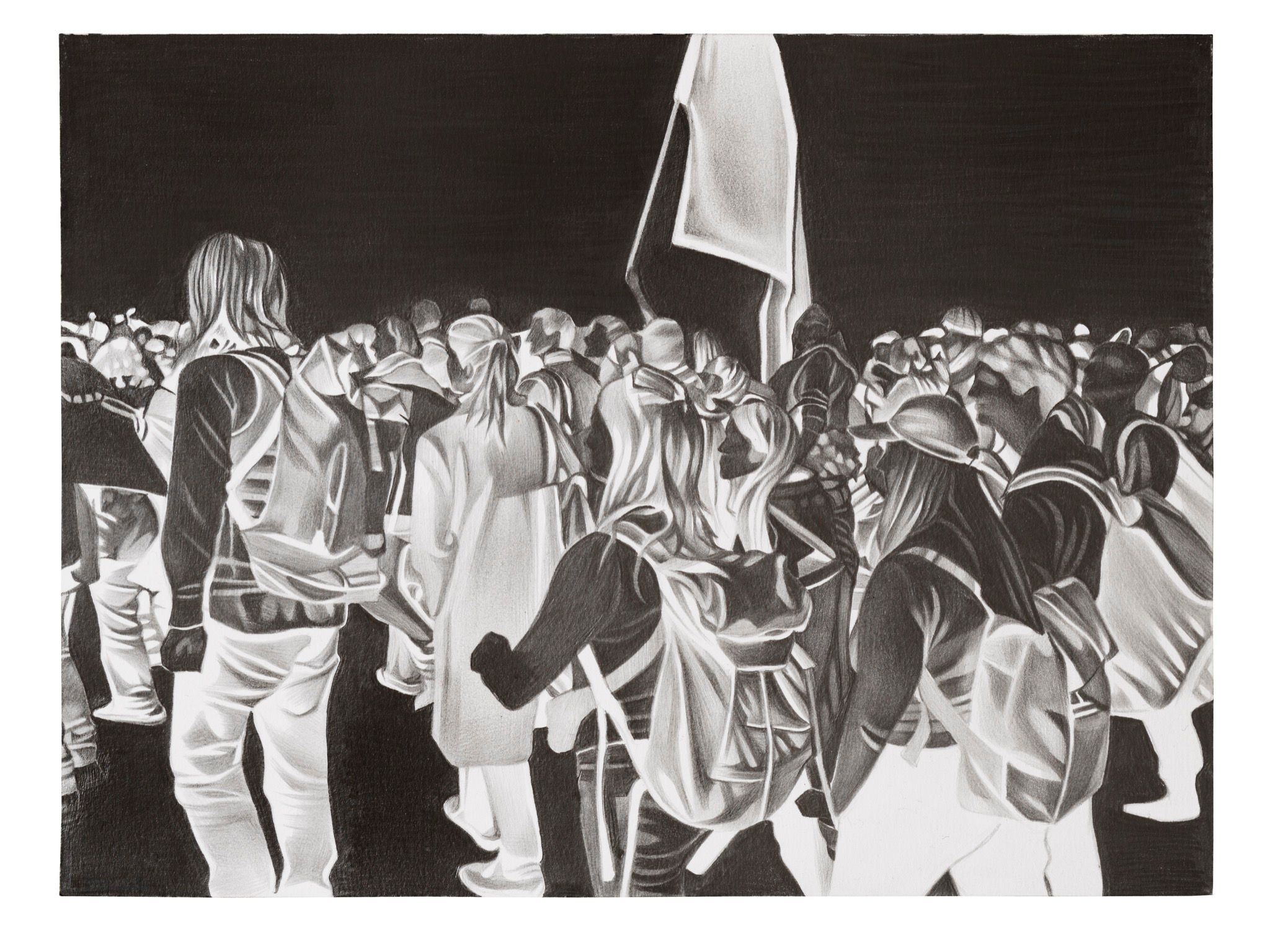
“Snowflake”: MARC BRANDENBURG on Solitude, Protest, and Berlin’s Most Liberal Era Ever

RICH THINGS: How Tourism, Sneakers, and Museums Make the Economy of Enrichment
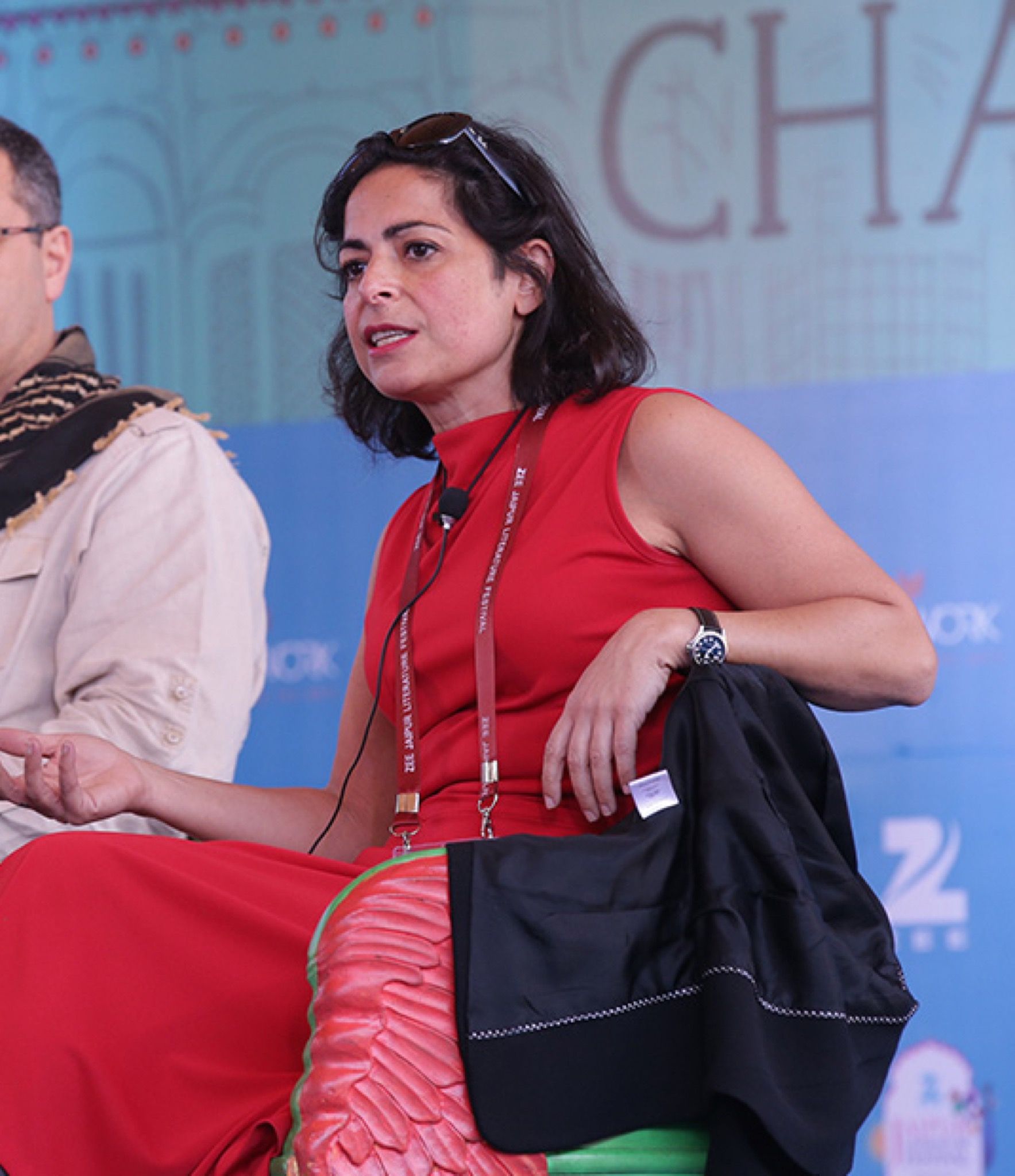
Between China and the Arabian peninsula, a “maritime silk road” powers global capitalism – even in the age of the cloud. LALEH KHALILI explains.